Dangerous Manifestations of Climate Disasters in 2024 | Part 1
Part 1
Tracking the climate situation daily over several years, we have analyzed the events that occurred and identified their patterns. This year has demonstrated that the alarming trends we previously observed are now manifesting with far greater intensity and frequency.
Instead of a traditional weekly Summary of Climate Disasters, we have opted to compile an analytical report on the new dangerous manifestations of climate disasters. As we prepared the materials for this article, we were struck by how significantly the situation on the planet deteriorated in 2024. And now, you will see this for yourselves.
Tornadoes
The rise in global temperature and humidity levels contributes to the formation of more powerful storms, often accompanied by tornadoes.
This leads not only to an increase in the number of these phenomena worldwide but also to anomalies in their characteristics.
In the United States, where tornadoes are most prevalent, the number recorded from January to November 2024 significantly exceeded the annual average for the period from 1991 to 2020, making it the second-highest on record.
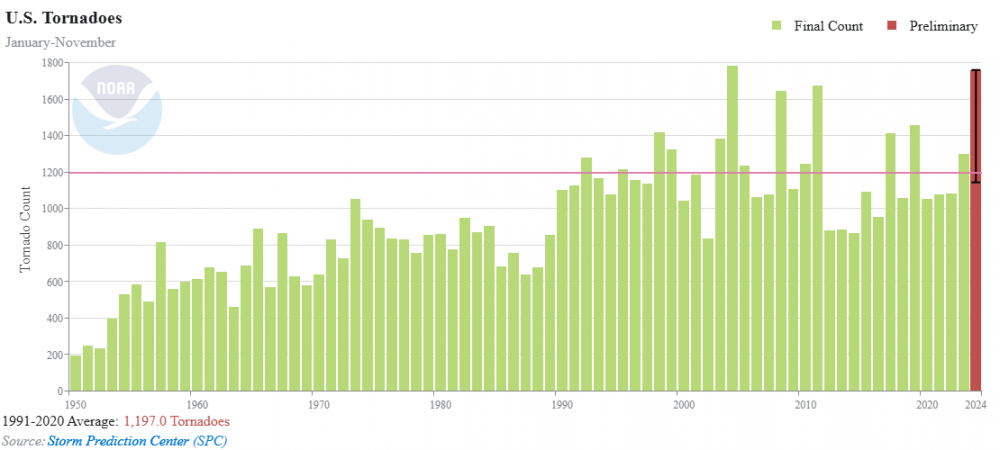
The annual average for the period from 1991 to 2020
The number of days with tornadoes is decreasing, but the number of events on those days is sharply rising. Robert Trapp, Professor of Atmospheric Sciences at the University of Illinois Urbana-Champaign and Director of the School of Earth, Society, and Environment, describes these phenomena as an “incline in the number of tornado outbreaks.”
In late April, from the 26th to the 28th, during a three-day tornado outbreak across the central United States, from Texas to Iowa, at least 160 tornadoes were recorded, ranging from EF-0 to EF-4. Thousands of people lost their homes, 5 people died, and over 100 were injured.
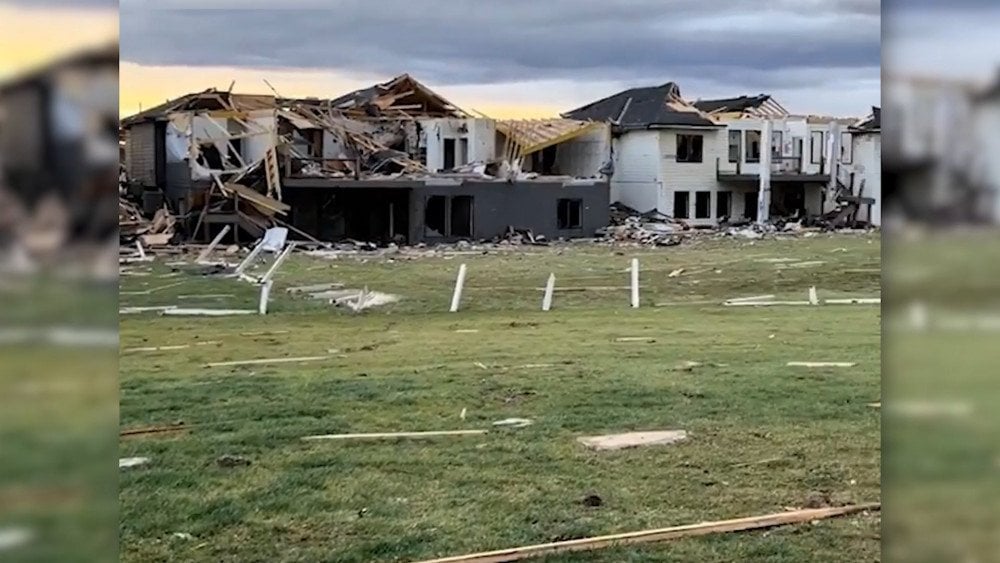
Aftermath of destructive tornadoes in the U.S.
In Europe, over recent decades, the average annual number of tornadoes has increased more than eighteenfold.
.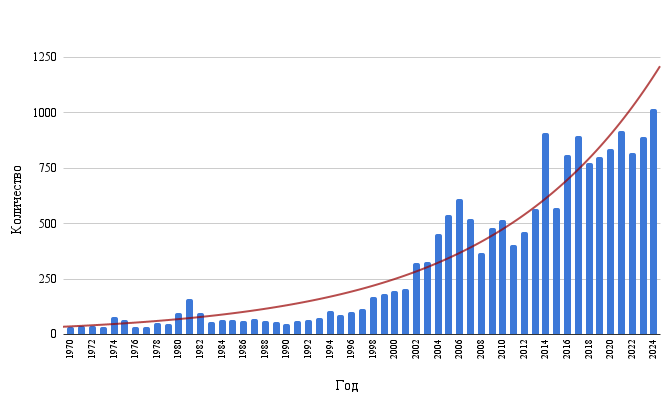
Graph showing the rise in tornado occurrences in Europe
In 2024, the number of tornadoes recorded so far has reached an all-time high.
Moreover, they have become much more powerful. For instance, on September 26, a powerful F2 tornado struck Belgium's Walloon Brabant and Flemish Brabant provinces—an unusual event for European countries. It uprooted trees and power lines, ripped roofs off houses, and lifted solar panels into the air.
Earlier, on July 13, several tornadoes destroyed villages in northern Lithuania. The wind speed of one tornado reached at least 60 m/s (134 mph), also qualifying it as an F2 tornado. According to experts, including meteorologist Gytis Valaika, this was one of the most powerful tornadoes in the history of Lithuania.
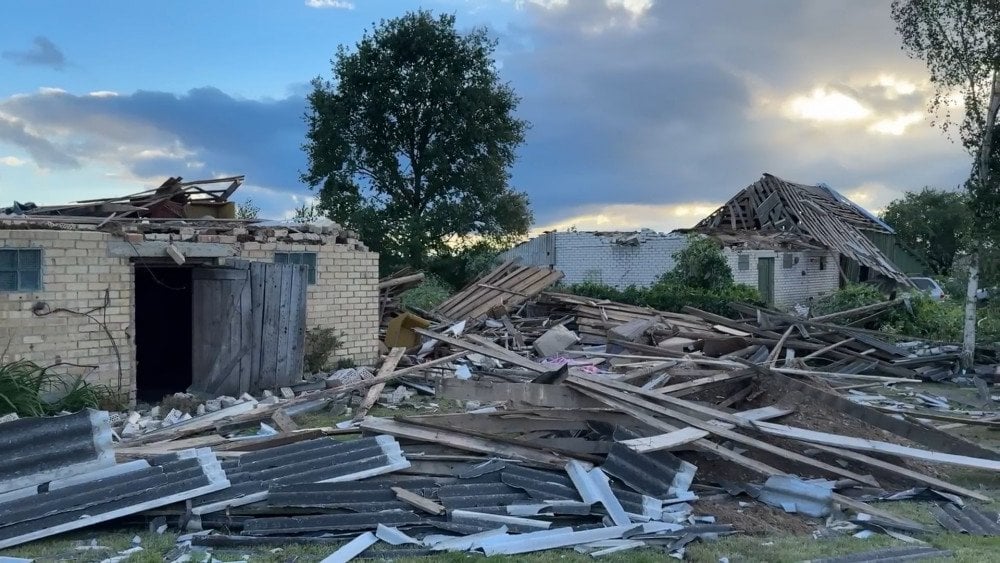
Almost completely destroyed village after a passing tornado, Lithuania
It is important to note that tornadoes require warmth to form, which is why their activity typically peaks during warm months and usually during daylight hours. However, these climatic norms have been rewritten. Here are just a few examples.
In the early hours of November 3, central and southern Oklahoma, including Oklahoma City and Newcastle, were hit by powerful thunderstorms and at least five tornadoes.
Research indicates that nighttime tornadoes are more than twice as deadly as those occurring during the day.
The tornado season in the U.S., which previously lasted from April to October, is nearly nonexistent now. An unusually late tornado struck Santa Cruz County, California, on December 14. It swept cars off the road, injuring 5 people. Tornadoes are rare in California; on average, only about eleven occur annually, primarily in spring and autumn.
The geography of tornadoes is also expanding. They are increasingly appearing in atypical regions.
From July 4 onward, at least three tornadoes swept through Shandong Province, China. The rapidly moving whirlwinds uprooted trees, tore off roofs, and scattered vehicles. As a result of these tornadoes, 83 people were injured, 5 lost their lives, and 2,820 homes were damaged. Nearly 25,000 hectares (61,776 acres) of agricultural land were affected.
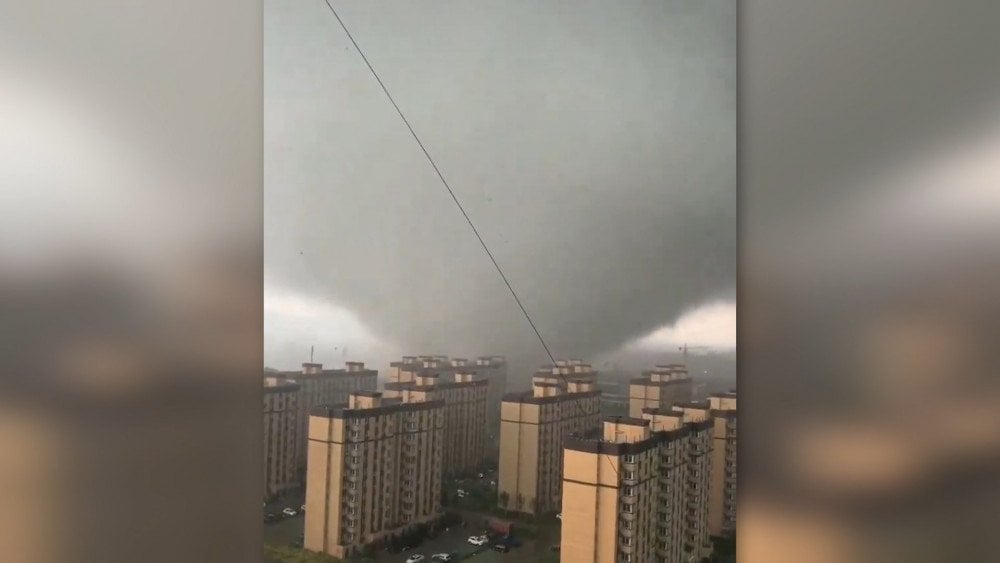
A powerful tornado approaching a city, China
This series of tornadoes alone exceeded the annual average by several times. According to the National Climate Center, Shandong Province experienced an average of 1.5 tornadoes per year from 1991 to 2020.
Powerful tornadoes are also atypical for India, where there is no official monitoring of such events.
However, the tornado that struck Jalpaiguri District in West Bengal on March 31 was so intense that it easily demolished structures and scattered motorcycles and cars. This severe event claimed 5 lives and left over 300 people injured.
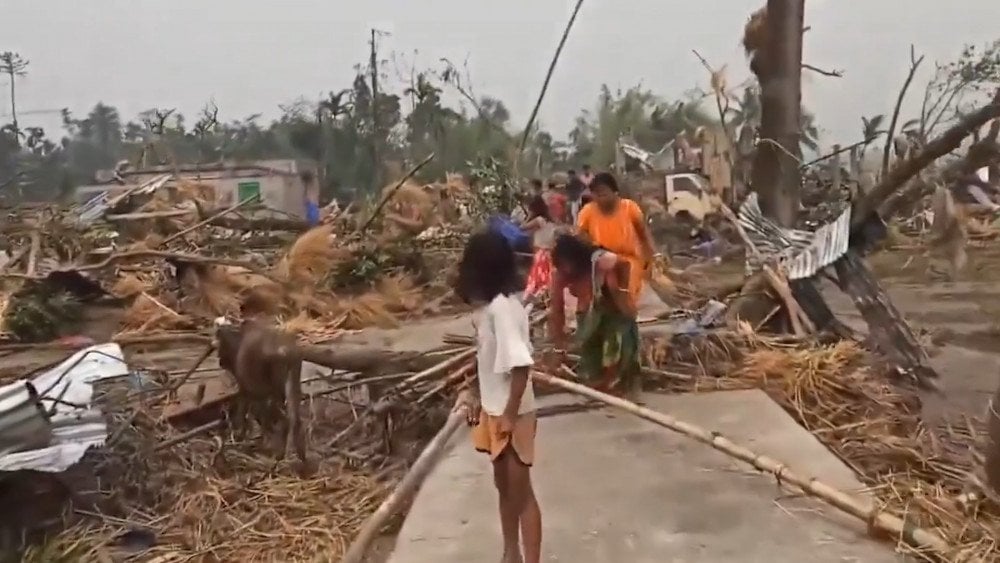
Survivors emerging from the wreckage left by the tornado, India
Research conducted at the A.M. Obukhov Institute of Atmospheric Physics in Moscow and Perm State University reveals that Russia previously recorded up to 15 significant tornadoes with wind speeds exceeding 50 m/s (112 mph) and one exceptionally powerful tornado with speeds over 70 m/s (157 mph). These events typically occurred in the southern regions of the country.
However, 2024 saw a series of tornadoes significantly farther north, where such phenomena are exceptionally rare. In June 2024 alone, at least 13 tornadoes occurred. Many residents witnessed tornadoes for the first time in their lives. These tornadoes struck the Pskov, Moscow, Yaroslavl, Chelyabinsk, Tyumen, and Omsk regions.
The most shocking event was the destructive tornado in the village of Berezino in the Klin urban district of Moscow Oblast.
On September 28, it tore through the village, ripping roofs off nearly all the houses, uprooting hundreds of trees, and reducing a cell tower to a twisted pile of metal.

Tornado destroyed the village of Berezino in Moscow Oblast, Russia
The European Severe Weather Database assigned it an IF3 category.
The IF3 category corresponds to the EF3 category on the Enhanced Fujita Scale.
This tornado combined several anomalies: a tornado of such power occurring in autumn and in temperate latitudes is exceptionally rare.
The behavior of some tornadoes left experts baffled. On April 30, in Tillman County, Oklahoma, USA, a severe thunderstorm triggered an extremely rare tornado that rotated clockwise, contrary to the typical counterclockwise rotation observed in the Northern Hemisphere. Yet this year, even such extremely rare phenomena are losing their uniqueness. On October 28, in the municipality of Benifaió in the Valencia region of Spain, eyewitnesses captured video footage of a massive tornado lifting debris and parts of buildings while also rotating clockwise.
Temperature Anomalies
Scientists are confident that 2024 will become the hottest year on record. According to the Copernicus Climate Change Service, the year-to-date (January–November 2024) global-average temperature anomaly is 0.14°C warmer than the same period in 2023. While this difference may seem minor, its impact on humanity is enormous.

Melted traffic lights and trash bins in Mexico, a car hood bulging from extreme heat in China
Temperatures are breaking every conceivable and inconceivable record.
On July 20, in the Japanese city of Shizuoka, a temperature of +38.9°C (102°F) was recorded, nearly 10 degrees above the climate normal which is +29°C (84°F).
In India, according to the Indian Meteorological Department (IMD), April’s maximum temperatures reached 46°C (114.8°F). People could not withstand the extreme heat, fainting at work. Police officers were equipped with air-conditioned helmets.

Indian police protect themselves from the heat with air-conditioned helmets
On July 6, in Death Valley National Park, USA the temperature reached 53.3°C (127.9°F). The record-breaking heat prevented a medical helicopter from taking off, as it is unsafe to fly at temperatures above +48.8°C (119.8°F). As a result, one person died of heatstroke.
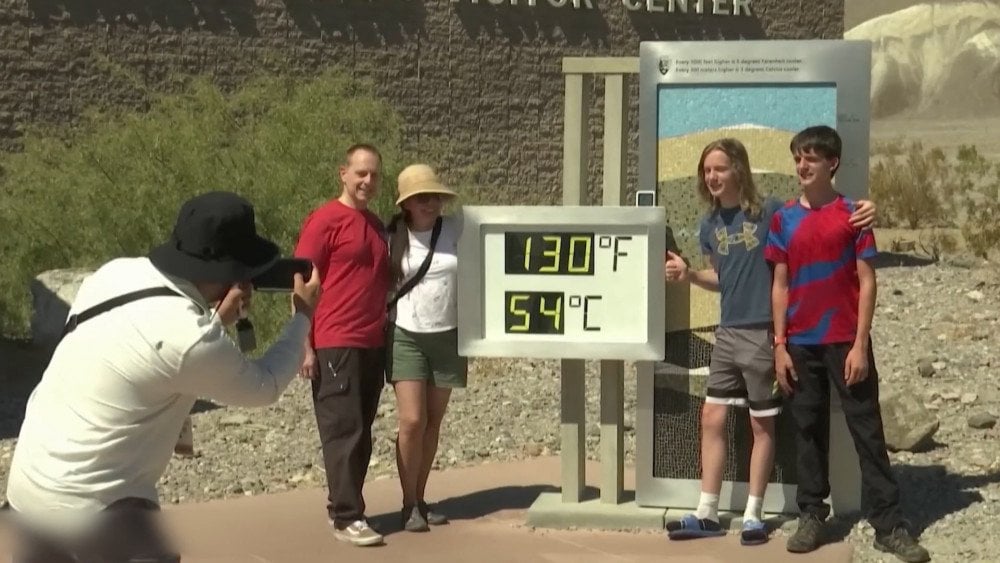
People are being photographed against the background of a thermometer showing abnormally high air temperature, USA
Even more dangerous are the waves of abnormally high temperatures, which are becoming increasingly frequent, prolonged, and intense.
In 2024, nearly every country experienced record-breaking heatwaves.
Starting in late May, Phoenix in Arizona, USA, endured an exhausting 113 consecutive days of heat exceeding 37.8°C (100°F), surpassing the previous record of 76 days set in 1993.
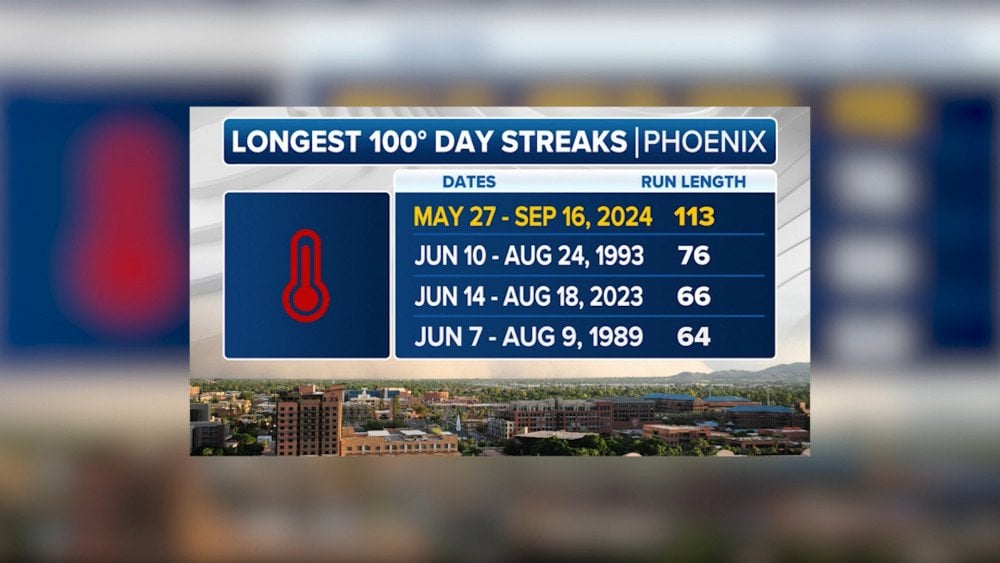
The longest heatwave in Phoenix, Arizona, USA
Following the hottest summer on record, the city faced yet another heatwave in autumn, from September 24 to October 14. Phoenix had never before recorded an October temperature above 43.3°C (110°F), yet in 2024, it hit that mark four times.
An extreme heatwave in June turned tragic in Saudi Arabia. In Mecca, temperatures did not drop below +40°C (104°F) for several consecutive days. This abnormal heat coincided with the Hajj pilgrimage period, during which more than 2,700 pilgrims suffered from heatstroke in just one day, June 16. People collapsed on the streets due to the unbearable heat, with at least 1,300 fatalities.

Doctors are helping people who have lost consciousness from the unbearable heat, Mecca, Saudi Arabia
A new danger is emerging: “tropical nights,” when nighttime temperatures do not drop below +20°C (68°F), preventing people and ecosystems from recovering.
In the summer, South Korea experienced its longest period of tropical nights since the beginning of meteorological records. In Seoul, from July 22 to August 20, 2024, temperatures did not drop below 25°C (77°F) for 30 consecutive nights, setting a record since 1907. In Busan, tropical nights lasted more than three consecutive weeks, breaking a record set in 1904.
It seems unimaginable, but tropical nights are now being recorded even in winter.
In Rabat, Morocco, on December 1, nighttime temperatures reached +26°C (78.8°F)—a temperature typical of a summer day. Notably, the average minimum temperature for December in this city is +9°C (48.2°F), while the average maximum temperature for July is +27°C (80.6°F).
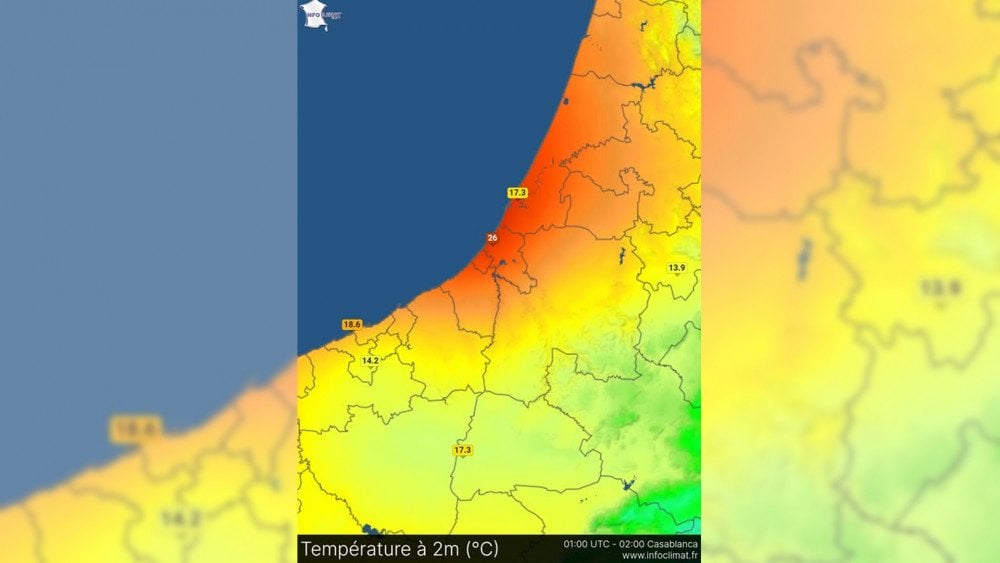
The hottest winter night in Morocco
On December 16, in Puerto de la Cruz, Canary Islands, nighttime temperatures did not drop below +29.6°C (85.3°F), setting a record for the hottest December night in the Northern Hemisphere on record.
The anomalous heat is rapidly followed by anomalous cold and vice versa. The seasons of the year seem to mix up.
In April of this year, Europeans experienced one of the most dramatic temperature swings ever recorded.
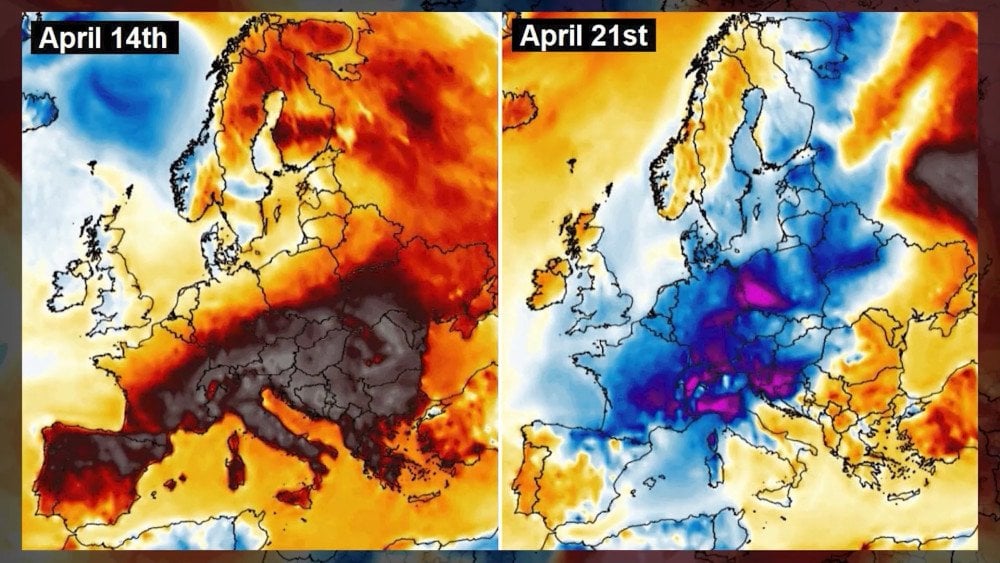
Map of temperature swings across European countries in April 2024
In Slovenia, within the municipality of Podčetrtek, temperatures dropped by more than 26 degrees in just 24 hours—from 27.2°C (81°F) to 1.0°C (33.8°F) on April 15 and 16, respectively.
In Austria, in the city of Villach, summer temperatures of +30.9°C (87.6°F) plummeted to 0.4°C (32.7°F) within just two days, from April 14 to 16.
In April, most European countries experienced temperatures hotter than a typical mid-summer before frost struck. These temperature swings caused significant damage to agriculture.
In Poland, rapeseed fields and strawberry plantations were frozen. On the morning of April 23, in the Zawiercie region thermometers registered -7°C (19.4°F).
In France, thousands of hectares of orchards and vineyards suffered frost damage with losses averaging 77%, as part of the harvest was destroyed in just two nights.
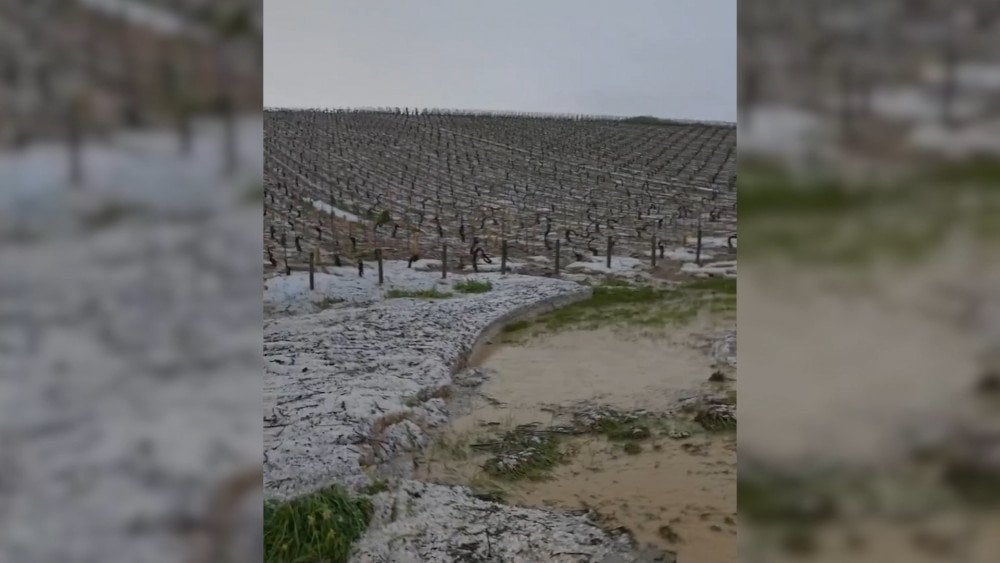
Orchards destroyed by frost, France
In early May, European Russia experienced chaotic weather conditions: the first ten days were the coldest on record. Twenty regions saw heavy snowfall. Unusual for this time of year, snow blanketed Northwestern Russia, Central Russia, the North Caucasus, the Volga region, the Urals, and parts of Western and Central Siberia. In some areas, air temperatures dropped to -10°C (14°F), which is 8–10°C below the climate normal.
Snow started even in southern regions like Krasnodar Krai, where temperatures had recently reached 30°C (86°F). Snow also affected Central Russia, the Volga region, the South, and the North Caucasus. According to the Ministry of Agriculture, abnormal frosts and snowfalls across 41 regions damaged crops, with over 1 million hectares (2.47 million acres) of crops lost.
Cold now also arrives in waves. In July, no region of Argentina escaped abnormally low temperatures. On July 6, Buenos Aires recorded -5°C (23°F), compared to its average minimum temperature of +9°C (48.2°F). In some regions, temperatures fell to -17°C (1.4°F).
In the provinces of Buenos Aires, La Pampa, southern Litoral, Córdoba, and Mendoza, water bodies froze over. Ducks froze into the ice, sheep became trapped in snowdrifts, and food supplies for people and livestock had to be delivered to affected areas by the military. Even the sea froze, along with hundreds of rivers and lagoons across the country.

Due to the abnormal cold, ducks froze into icy water bodies, Argentina
Drought
We are facing a paradox: alongside an increase in extreme rainfall, droughts are intensifying globally.
Southern Africa has been struck by the most severe drought in the last 100 years. Countries such as Lesotho, Malawi, Namibia, and Zimbabwe are experiencing a severe food crisis, with national emergencies declared.
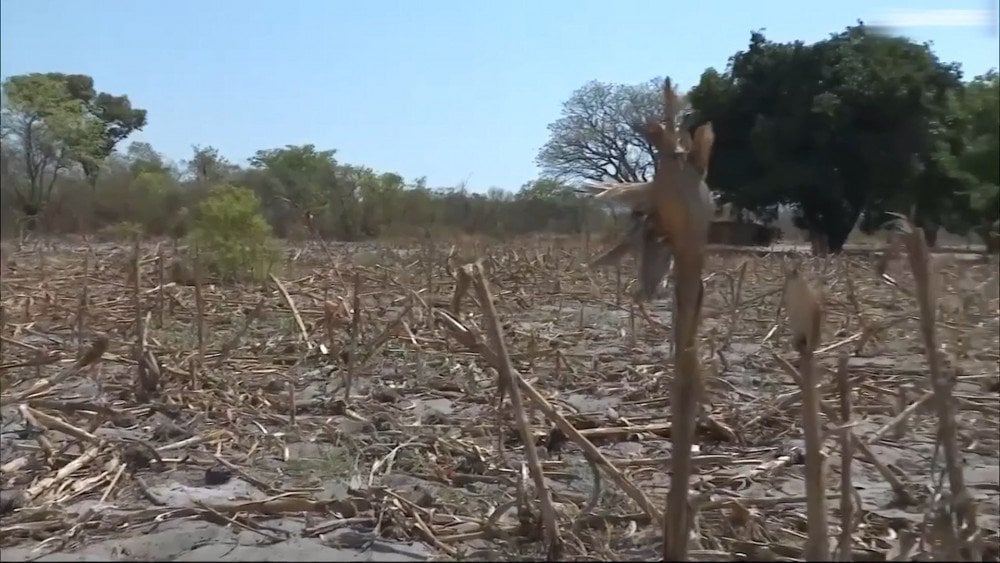
Drought in southern Africa
In Zambia, over 1 million hectares (2.47 million acres) of crops were destroyed, leading to widespread food shortages.
By August 2024, residents in 23 of Malawi’s 28 districts required food aid to survive.
In some countries, campaigns were launched to cull wild animals, including elephants, to feed the population. According to the United Nations, drought destroyed 70% of Zambia’s crops and 80% of Zimbabwe’s harvests.
In Sicily, Italy, one of the country’s main agricultural regions, water shortages and scorching heat in 2024 led to a 70% reduction in forage production, according to Coldiretti, Italy’s leading farmers’ association.
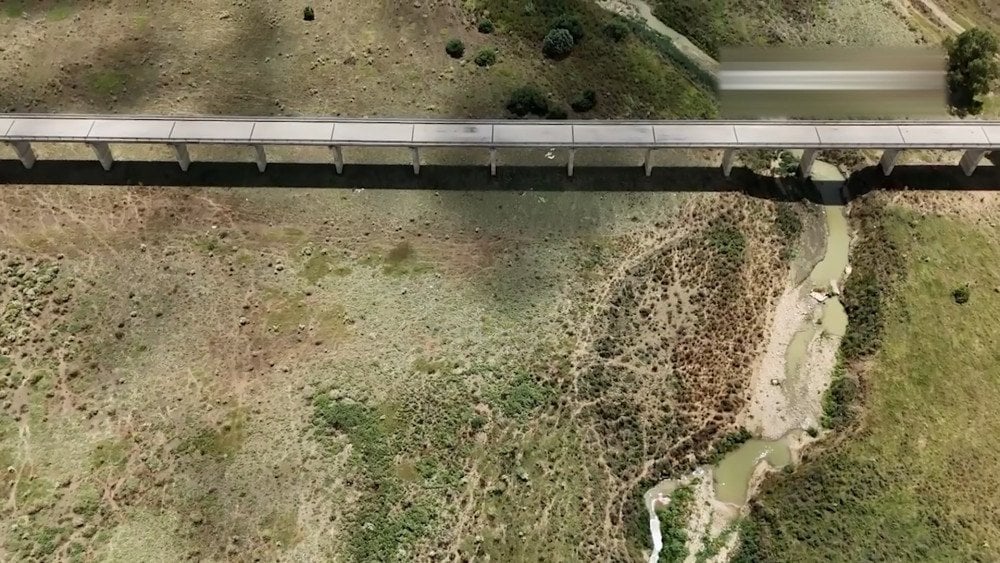
Aftermath of severe drought in Sicily, Italy
In Greece, many farmers had to deliver water by truck to save their olive crops.
Meanwhile, in Hungary, drought-related losses exceeded $1.5 billion since the beginning of the year.
Drought is increasingly being recorded in places where it was previously rare.
Brazil is enduring its second consecutive year of the worst drought in recorded history. According to the Center for Natural Disaster Monitoring, this is the most severe drought since 1950. Almost 60% of the country has been affected, and rivers have significantly dried up. In Brasília, the capital, there was no rainfall for 167 consecutive days. This is a record for the longest drought, according to Inmet data as of October 8, 2024.
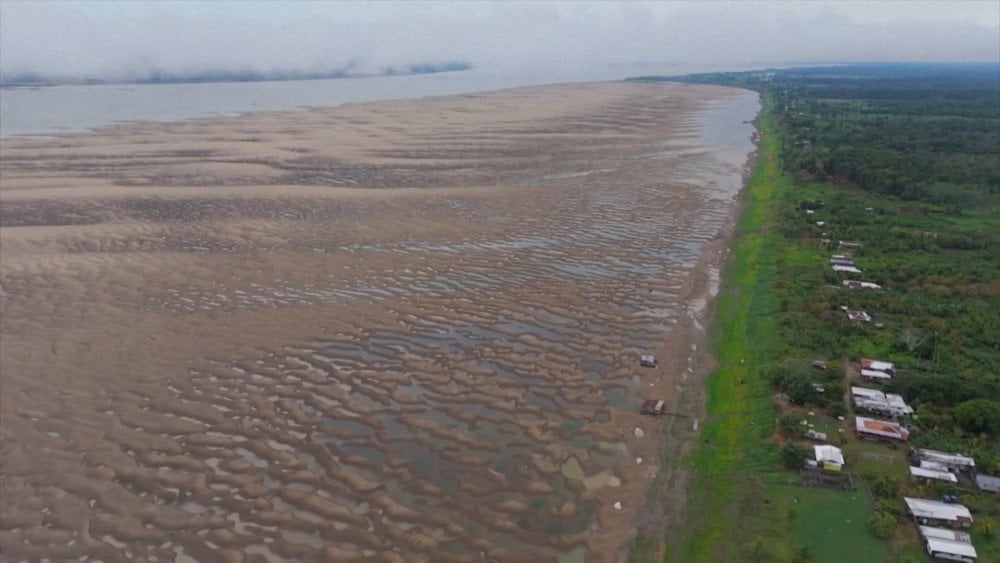
Severe drought dries up a water reservoir in Brazil
In October, water levels in the Solimões and Rio Negro rivers—the largest tributaries of the Amazon—reached their lowest levels since observations began in 1902. The rivers became impassable for boats, forcing people to walk home for hours under the scorching sun. Fish, a primary food source for locals, disappeared, and a critical shortage of drinking water led to a spike in intestinal infections. Around 750,000 people were left without food, water, or transportation.
NASA's GRACE and GRACE-FO satellites have been tracking a global decline in freshwater reserves since 2014. Currently, these reserves are at critically low levels.
River flow reductions have occurred in 402 river basins worldwide, impacting 107.5 million people. Additionally, lakes in 364 river basins are rapidly shrinking or disappearing entirely.
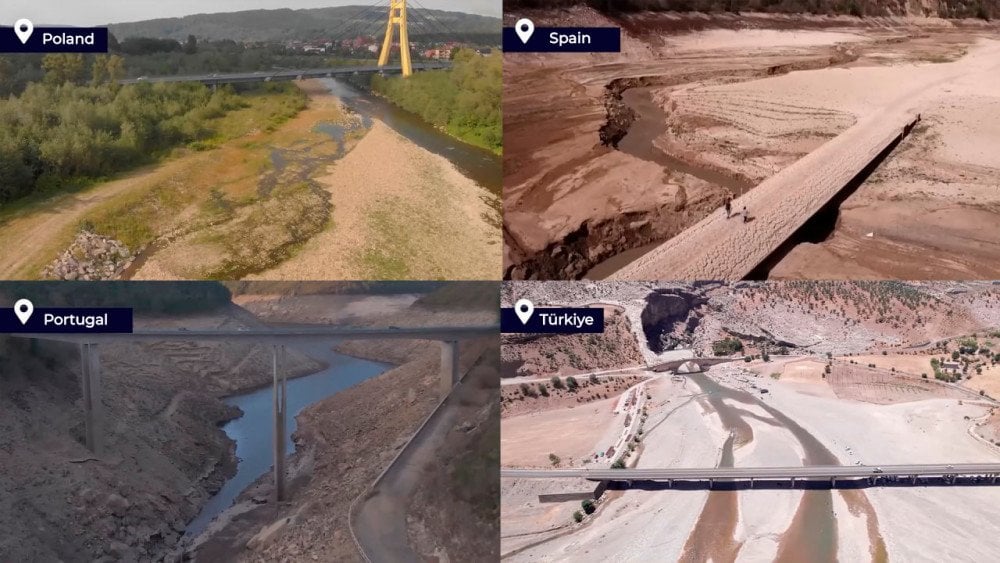
Rivers dried or reduced to critical levels in various countries
A historic drought has depleted Spain's vital Sau Reservoir. In the summer of 2024, Greece saw Lake Kato Scholari, located 30 km (18.6 miles) from Thessaloniki, evaporate before their eyes.
Meanwhile, the once-unique hypersaline carbonate lake Pikrolimni in northern Greece has vanished, leaving behind cracked earth.
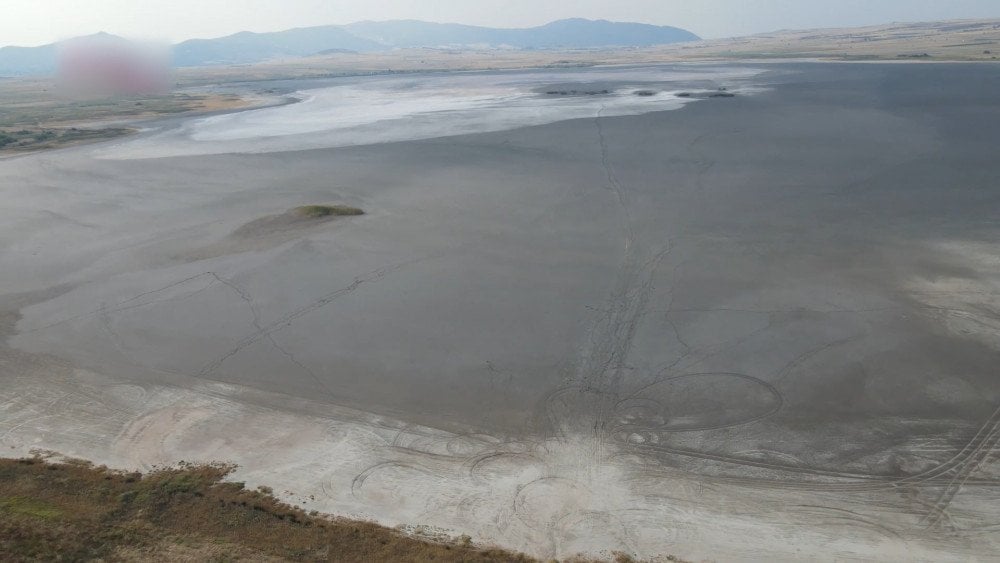
The unique hypersaline Lake Pikrolimni in Greece no longer exists
In September, Ecuador’s drought caused an energy crisis. Low reservoir levels drastically reduced hydroelectric power generation, the country’s primary electricity source. As a result, daily power outages lasted up to 14 hours, causing massive economic losses and forcing many businesses to shut down.
According to the U.S. Drought Monitor, in October 2024, exceptionally dry conditions affected more than half of the United States, impacting over 78% of the population (242 million people). This marked a record in the 25-year history of drought monitoring. From June to October 29, the area affected by drought in the U.S. expanded from 12% to 54%.
Specialists from the National Oceanic and Atmospheric Administration (NOAA) referred to this rapid escalation as a “flash drought.”
This phenomenon develops extremely quickly over weeks or months; it is unpredictable, and leads to the most tragic consequences.
Wildfires
Droughts and heatwaves are increasing the risk of wildfires, even in regions where they were previously rare.
Roraima, the northernmost state of Brazil, is covered with tropical forests and has a humid climate that suppresses natural wildfires. However, in February 2024, 2,057 active fires were recorded there—five times the monthly average.
In the Pantanal, the world’s largest tropical wetland, the area of wildfires in May and June increased tenfold compared to the previous year. The fires caused catastrophic damage to the ecosystem, destroying about 1.5 million hectares (3.7 million acres), particularly in Bolivia and Paraguay.
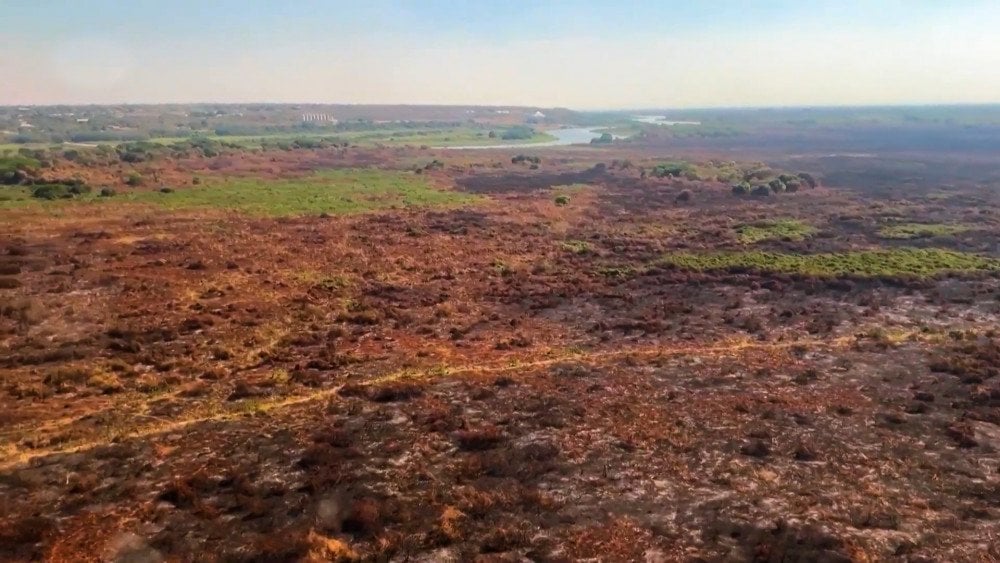
Burned wetland in the Pantanal
Fire seasonality is disappearing: wildfires can now ignite at any time of the year.
In Canada, significant wildfires began as early as March. The main cause was ‘zombie fires’ that smoldered under the snow from the previous season. This winter, there were an unprecedented 149 zombie fires. By May, thousands of people in British Columbia had to be evacuated due to wildfires.
In the U.S., the wildfire season traditionally peaked from June to September. However, by February 2024, nearly 568,000 hectares (1.4 million acres) had already burned—a record for February in the country’s history.
Wildfires, once more common in uninhabited natural areas, are now spreading to urban areas due to delayed containment.
On August 11, a powerful wildfire broke out in the town of Varnavas, Greece. The flames rapidly surrounded the settlement, with fire columns up to 25 meters (82 feet) high consuming homes, vehicles, and businesses. One person died. Strong winds, with gusts reaching 90 km/h (56 mph), quickly pushed the fire out of control, advancing toward Athens. Thousands were evacuated from the capital’s suburbs.
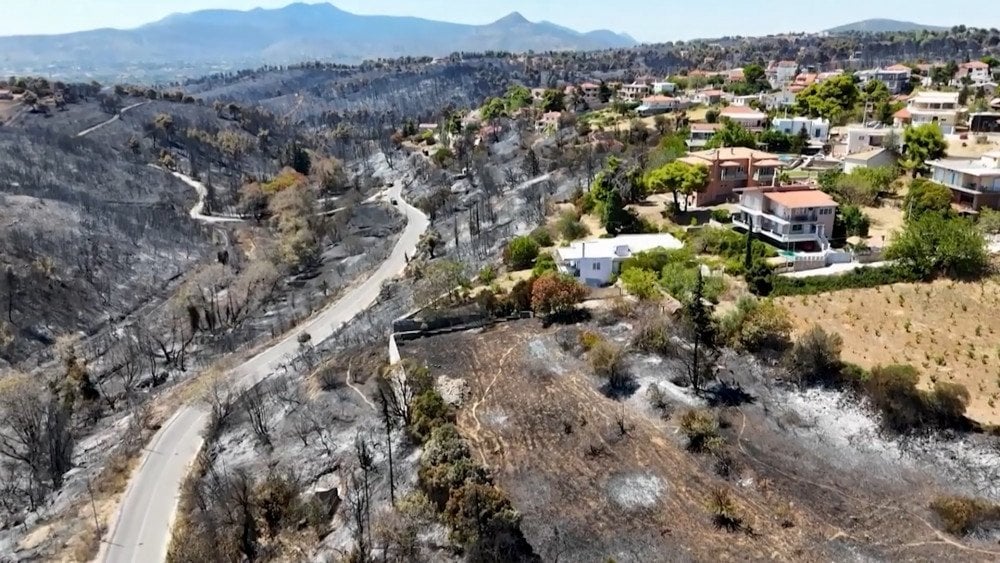
Abandoned suburbs due to wildfire in Greece
On August 15, 2024, a natural wildfire severely affected İzmir, Türkiye’s third-largest city, and its surrounding provinces.

Burning İzmir, Türkiye
Strong winds rapidly spread the fire to residential neighborhoods in Karşıyaka, one of the city’s most developed and densely populated districts. The blaze raged for 24 hours, damaging homes and dozens of businesses in the industrial zone. The fire injured 78 people, 29 of whom were hospitalized.
Wildfires are becoming larger and more intense.
Many evaluate wildfire severity based on their frequency, but recent years, especially 2024, show a paradox: while the number of fires remains relatively stable, the area burned has significantly increased.
For example, in the U.S., from January to December 13, 2024, there were 54,769 wildfires—nearly 2,500 fewer than the 10-year average (2014–2023). However, the area they burned exceeded the average by 683,000 hectares (1.7 million acres), totaling 3,439,121 hectares (8.5 million acres).
The Smokehouse Creek fire in Texas, USA, which ignited on February 26, became the largest in the state’s history. The fire spread at an unprecedented speed—consuming two football fields per second. Within days, nearly 405,000 hectares (1 million acres) were burned, leaving scars visible from space.

Rapidly spreading wildfire in Texas, USA
Wildfires are becoming so powerful that they create their own weather conditions.
In September 2024, the large Line Fire in Southern California burned hundreds of hectares and generated a unique type of cloud known as “fire clouds.”
Pyrocumulus clouds are convective (cumulus or cumulonimbus) clouds caused by wildfires or volcanic activity. They form similarly to thunderclouds: heat from the fire creates strong upward air currents, and water vapor condenses on smoke particles, forming clouds.
The Line Fire evolved into a full-fledged thunderstorm with strong gusty winds and over 3,500 lightning strikes. This intensified the fire and made firefighting efforts significantly more challenging.
There is another reason wildfires are increasingly difficult to extinguish: degassing. This is the release of flammable gases from the ground, which has intensified in recent years due to increased tectonic activity. Such fires primarily occur along tectonic fault lines.
In 2024, wildfire activity was recorded in other regions of the world.
Southern Europe experienced its worst wildfire season in history.
In August, the area burned by wildfires surged dramatically in several African countries, particularly Angola and the Democratic Republic of Congo. In just one week, about 22 million hectares (54.4 million acres) burned, accounting for roughly 80% of the total global wildfire area.
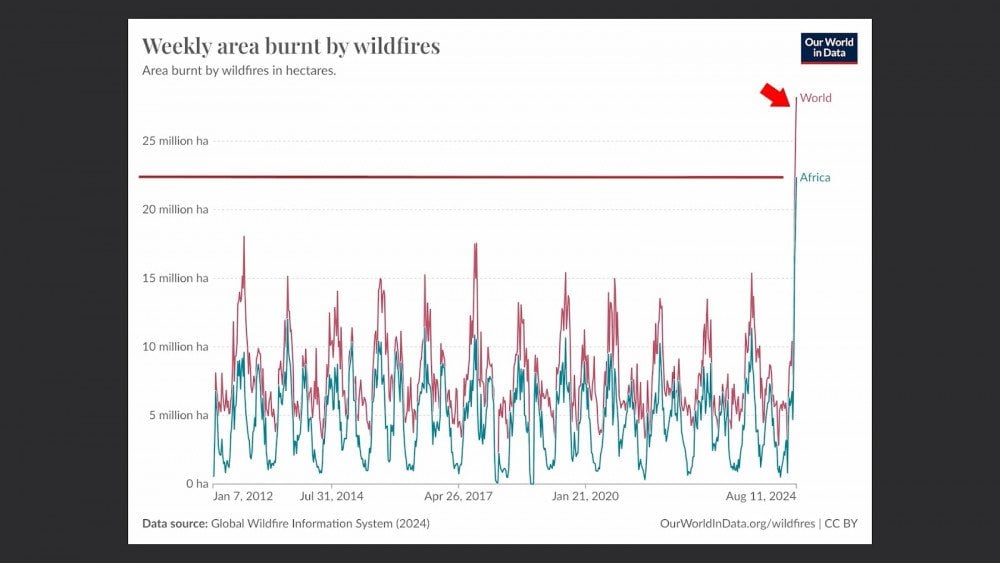
Weekly global wildfire area burned from 2012 to 2024
In Russia, during the first nine months of 2024, the wildfire area in the Zabaykalsky Krai reached a record for the past 15 years. The fire scorched 2.5 million hectares (6.2 million acres).
An intensification of the wildfire season was also observed in October and November in northern Australia.
In 2024, cataclysms shattered hundreds of thousands of records—but these are not achievements to be proud of. On the contrary, they represent a series of extreme disasters that are destroying our future at an unprecedented pace. Even the slightest anomaly in a natural phenomenon can prove fatal for billions of people.
If we continue to turn a blind eye to this, things will not go back to normal on their own tomorrow.
In every article, we highlight solutions to the current crisis and explain how each of us can influence the course of these events. We will never tire of repeating this: if you value your life and the lives of your loved ones, ignoring what is happening is not an option. By watching the international forum “Global Crisis. The Responsibility”, you will gain a deep understanding of the situation and learn what actions need to be taken immediately.
It is up to us to defend our lives. Whether we like it or not, the responsibility rests with us.
Watch the video version of this article here:
Leave a comment